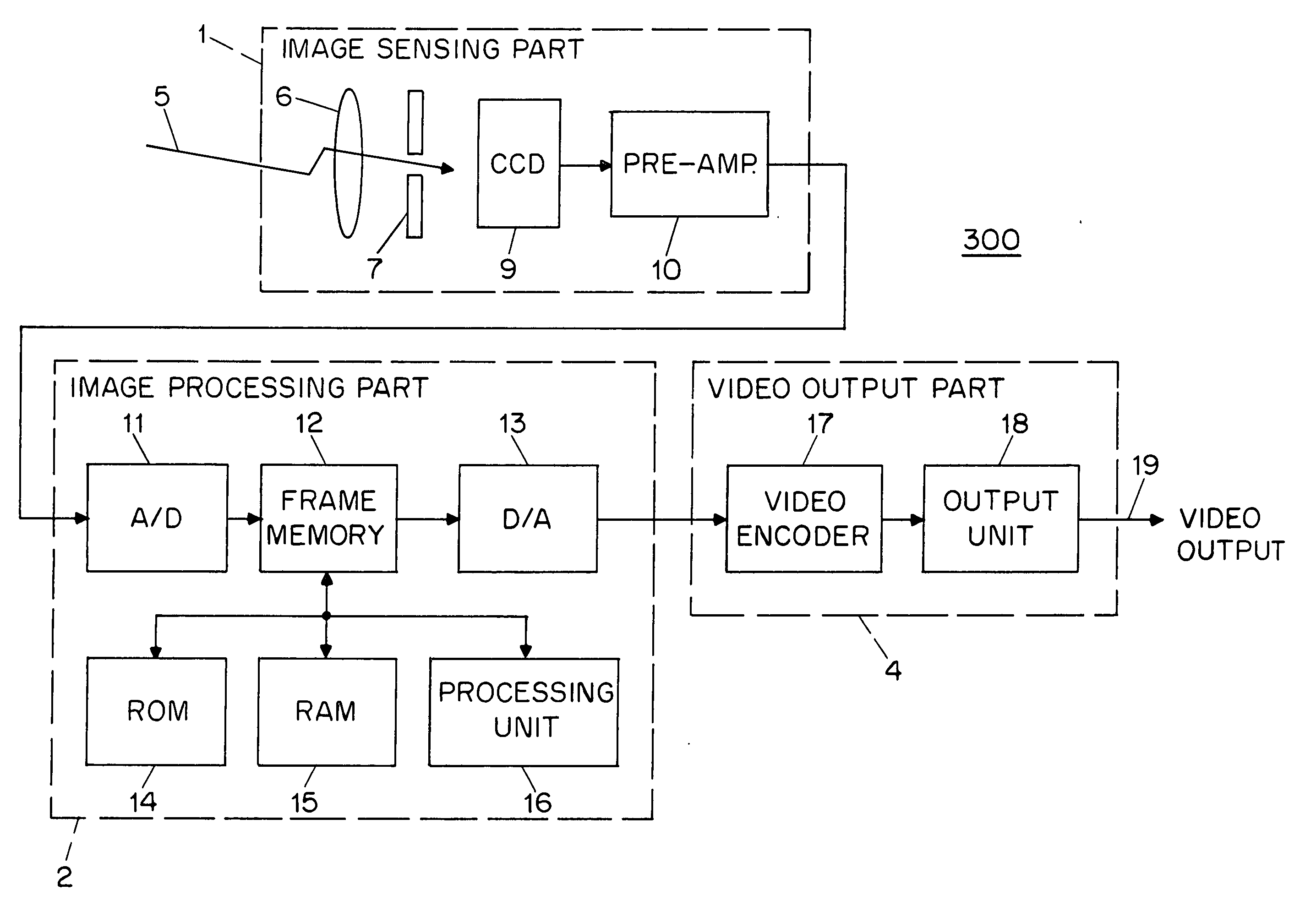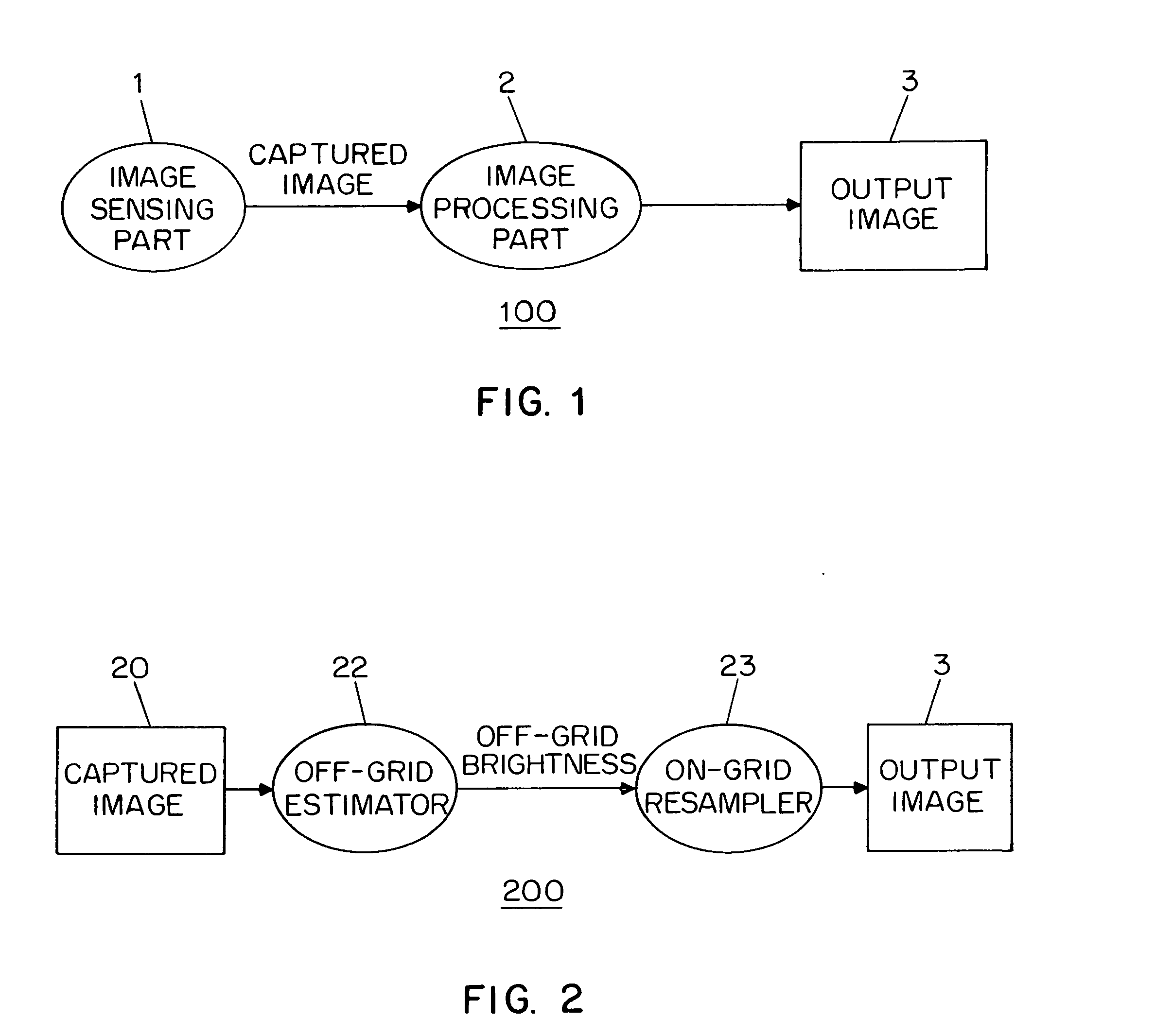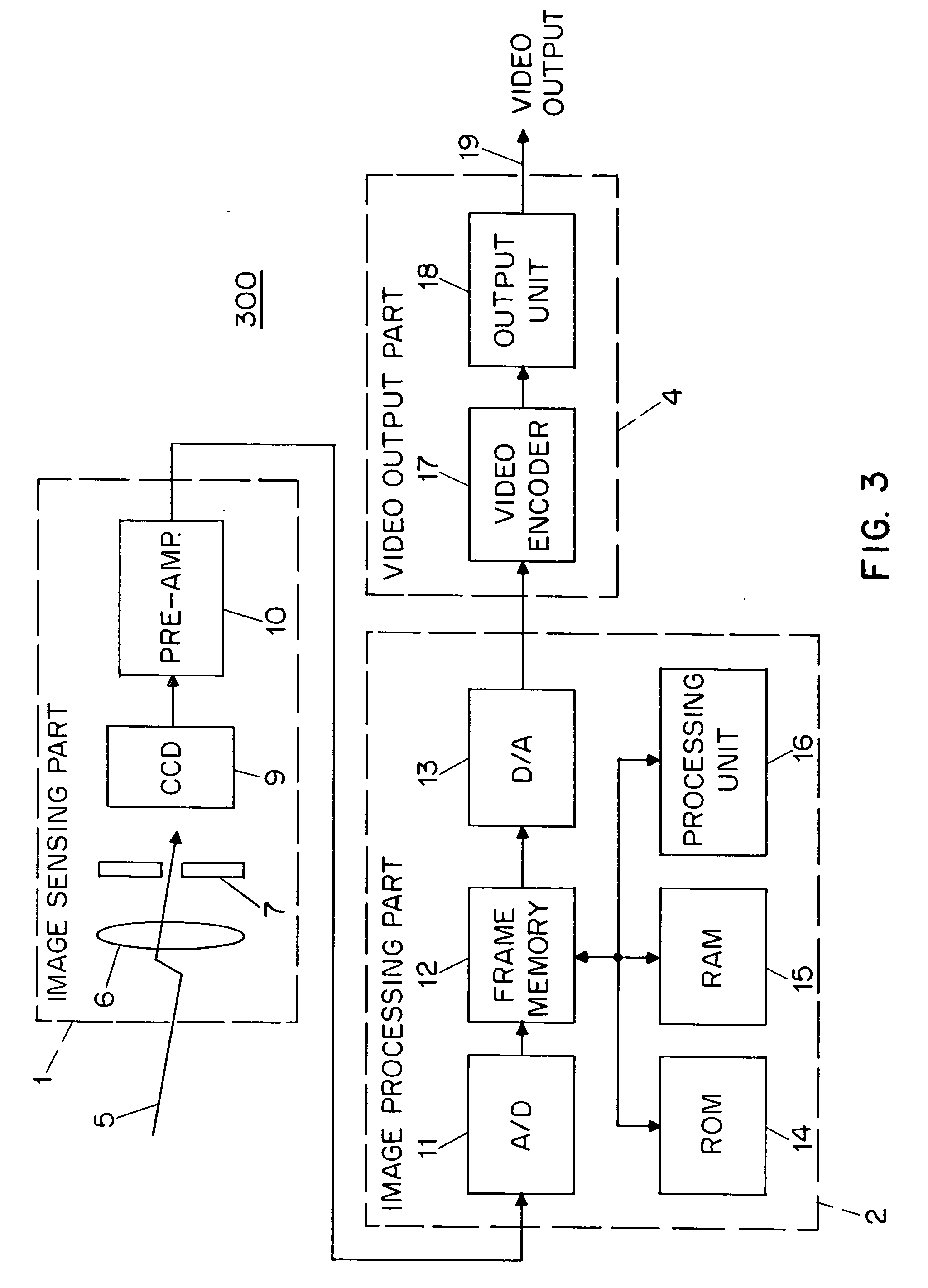Method and apparatus for obtaining high dynamic range images
a high-dynamic range, image technology, applied in the direction of color signal processing circuits, color television details, television systems, etc., can solve the problems of insufficient capture of fine details of most real life scenes, very limited dynamic range of known image sensing devices, and possible scene changes, etc., to achieve a high-dynamic range image
- Summary
- Abstract
- Description
- Claims
- Application Information
AI Technical Summary
Benefits of technology
Problems solved by technology
Method used
Image
Examples
Embodiment Construction
[0084] Referring to FIG. 1, there is shown a data flow diagram 100 of a system for capturing relatively high dynamic range images using a relatively low dynamic range image sensor in accordance with the present invention. The system has an image sensing part 1 that includes a relatively low dynamic range image sensor (not shown in FIG. 1) having a multiplicity of light-sensing elements in an array (not shown). The term “light” as used in the specification and claims shall mean electromagnetic radiation whose wavelength may be anywhere in the spectrum from the far infrared to x-rays. The array of light-sensing elements of the image sensor may have any arrangement, including without limitation rectangular, linear, circular and hexagonal grids, and the light-sensing elements in the array need not be uniformly disposed. The array of light-sensing elements has a predetermined spatially varying sensitivity pattern to incident light, and each light-sensing element of the image sensor produ...
PUM
 Login to View More
Login to View More Abstract
Description
Claims
Application Information
 Login to View More
Login to View More - R&D
- Intellectual Property
- Life Sciences
- Materials
- Tech Scout
- Unparalleled Data Quality
- Higher Quality Content
- 60% Fewer Hallucinations
Browse by: Latest US Patents, China's latest patents, Technical Efficacy Thesaurus, Application Domain, Technology Topic, Popular Technical Reports.
© 2025 PatSnap. All rights reserved.Legal|Privacy policy|Modern Slavery Act Transparency Statement|Sitemap|About US| Contact US: help@patsnap.com



